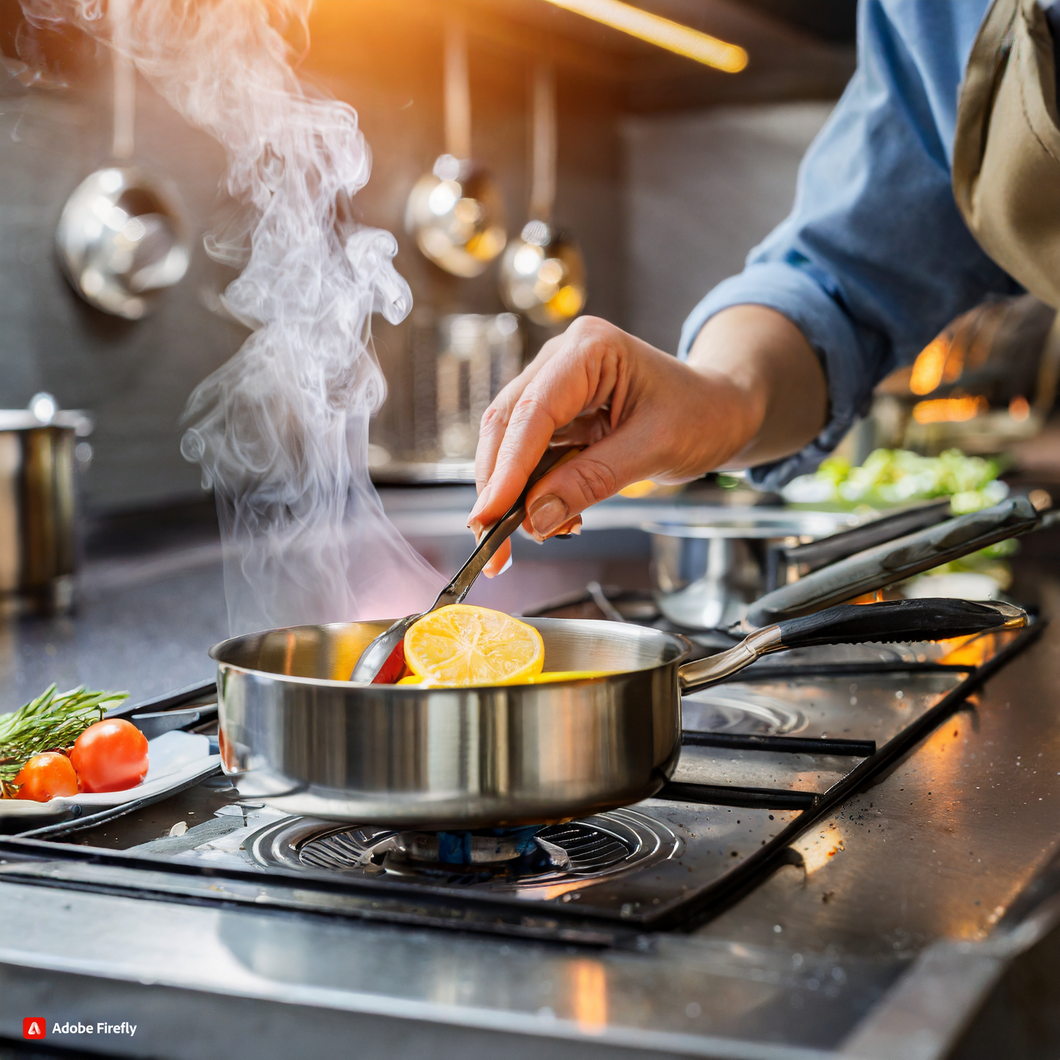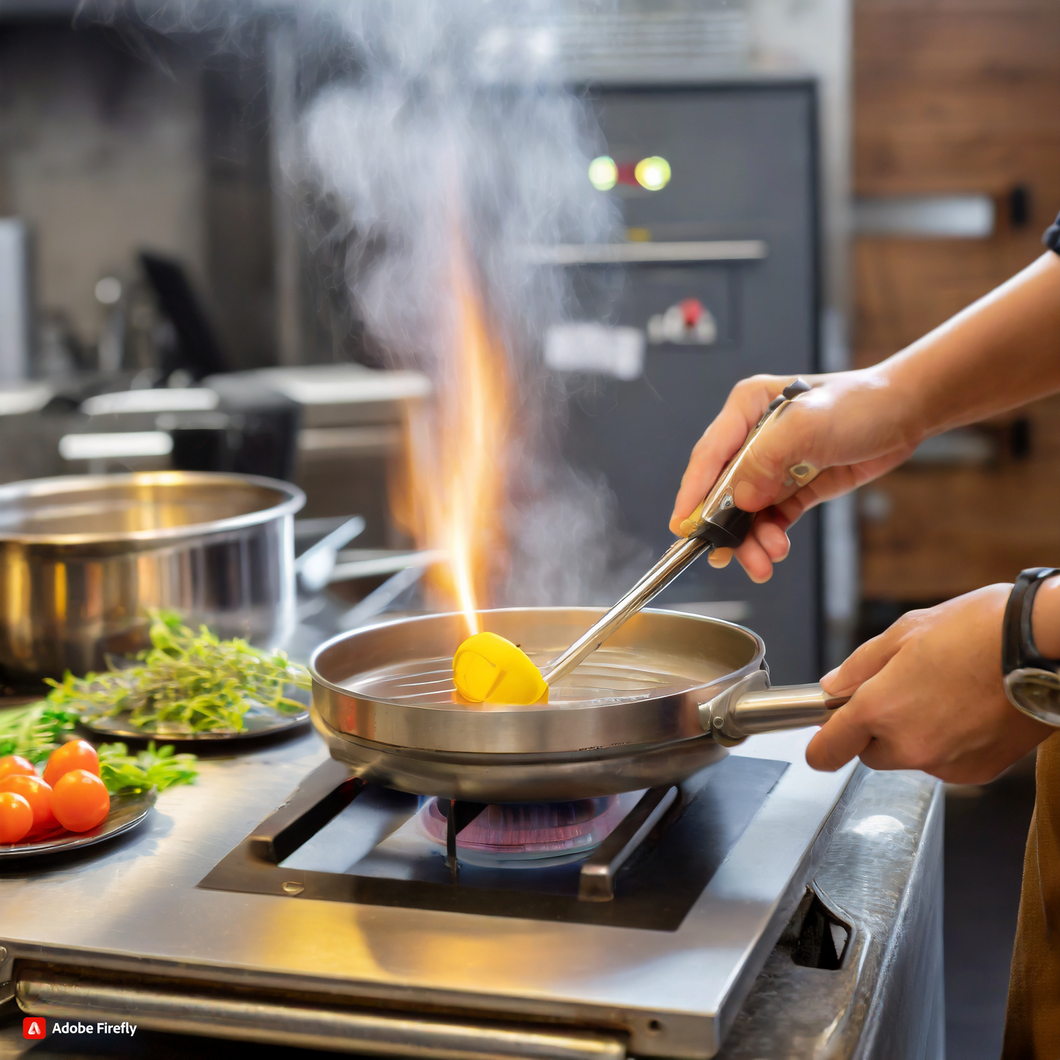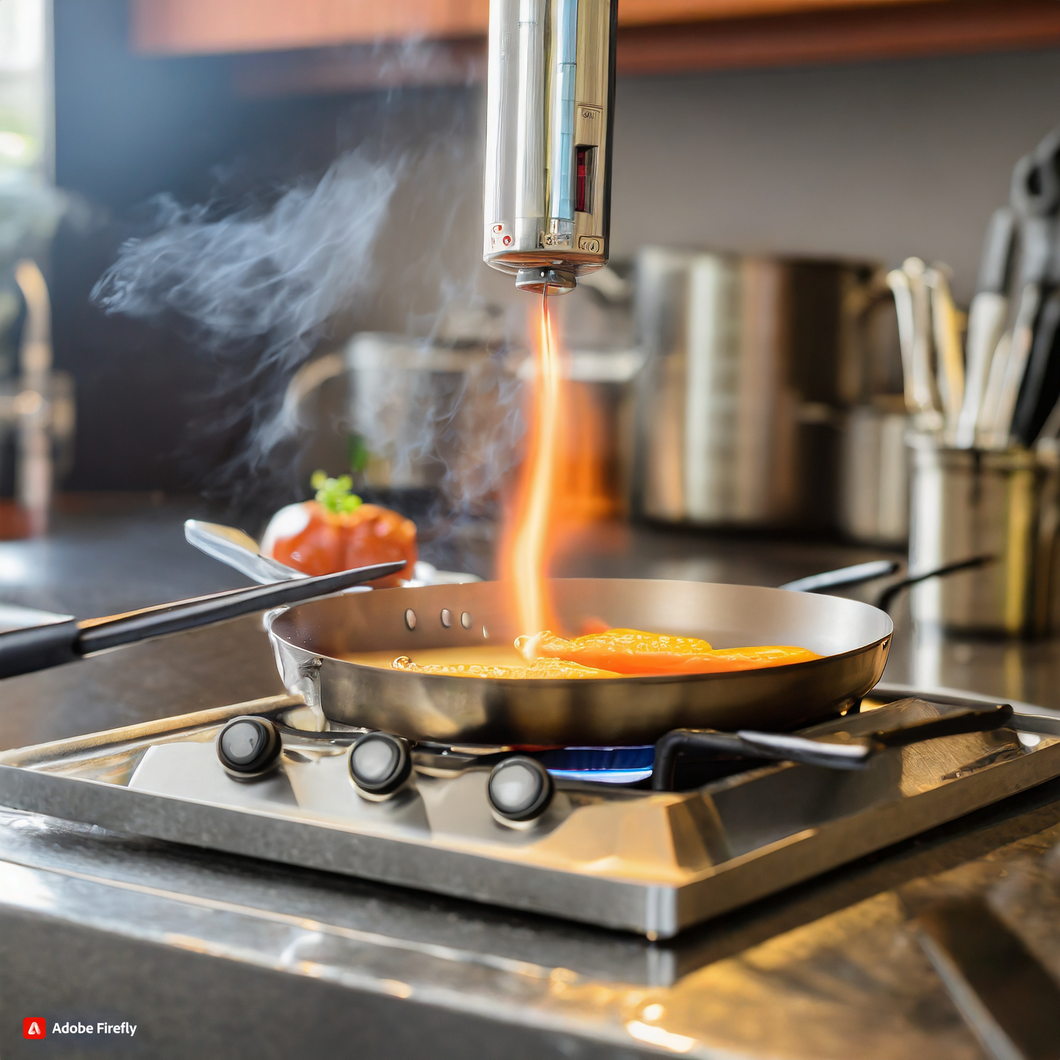Introduction
Precision Heat is a revolutionary technology that has transformed the culinary world by allowing chefs and home cooks to master Temperature Control in their cooking. This cutting-edge technology has been developed to provide precise and consistent heat, resulting in perfectly cooked dishes every time. With Precision Heat, cooking has become more efficient, accurate, and enjoyable, making it a must-have tool for any kitchen. Let’s explore how this innovative technology has elevated the art of cooking to a whole new level.
The Importance of Temperature Control in Culinary Precision Heat
When it comes to cooking, precision is key. From measuring ingredients to following recipes, every step plays a crucial role in creating a delicious dish. But there is one aspect of cooking that often gets overlooked – Temperature Control. Many home cooks may not realize the importance of Temperature Control in culinary precision heat, but it can make all the difference in the final outcome of your dish.

Temperature Control refers to the ability to maintain a specific temperature throughout the cooking process. This can be achieved through various methods such as using a thermometer, adjusting the heat on the stove, or using specialized equipment like sous vide machines. No matter the method, the goal is to ensure that the food is cooked at the exact temperature needed for optimal results.
One of the main reasons why Temperature Control is crucial in cooking is because it affects the texture and flavor of the food. Different temperatures can produce vastly different results, even with the same ingredients. For example, cooking a steak at a high temperature will result in a crispy exterior and a juicy interior, while cooking it at a low temperature will result in a more evenly cooked, tender steak. Similarly, baking a cake at a high temperature will result in a crispy crust, while baking it at a lower temperature will result in a moist and fluffy cake.
Another reason why Temperature Control is important is food safety. Cooking food at the right temperature is essential to kill harmful bacteria and prevent foodborne illnesses. According to the USDA, the danger zone for food is between 40°F and 140°F, as this is the temperature range where bacteria can grow rapidly. By cooking food at the correct temperature, you can ensure that it is safe to eat and avoid any potential health risks.
Achieving precision heat in cooking also requires an understanding of the different cooking methods and their corresponding temperatures. For example, searing, which involves cooking food at a high temperature for a short amount of time, is best for meats and vegetables that need a crispy exterior. On the other hand, braising, which involves cooking food at a low temperature for a longer period, is ideal for tougher cuts of meat that need to be cooked slowly to become tender.
One cooking method that has gained popularity in recent years is sous vide. This technique involves cooking food in a precisely controlled water bath at a low temperature for an extended period. The result is perfectly cooked food with a consistent texture throughout. Sous vide is especially useful for delicate foods like fish and eggs, as it allows for precise Temperature Control and prevents overcooking.
In addition to using the right cooking method and temperature, it is also essential to monitor the temperature of your food while cooking. This is where a thermometer comes in handy. A thermometer allows you to check the internal temperature of your food, ensuring that it has reached the desired level of doneness. This is especially important for meats, as different levels of doneness require different internal temperatures.
In conclusion, Temperature Control is a crucial aspect of culinary precision heat. It affects the texture, flavor, and safety of your food, and can make or break a dish. By understanding the different cooking methods and their corresponding temperatures, using a thermometer, and paying close attention to the temperature of your food, you can achieve perfect results every time. So the next time you’re in the kitchen, don’t forget about the importance of Temperature Control – your taste buds (and stomach) will thank you.
Mastering Temperature Control: Tips and Techniques for Perfect Culinary Results
Are you tired of overcooked or undercooked meals? Do you struggle with maintaining the perfect temperature while cooking? Look no further, because precision heat is the key to mastering Temperature Control in the culinary world.

Temperature Control is crucial in cooking, as it can make or break a dish. Whether you’re baking, grilling, or sautéing, having the right temperature is essential for achieving the perfect texture, flavor, and doneness. But how do you achieve precision heat? Here are some tips and techniques to help you become a master of Temperature Control in the kitchen.
Invest in a Good Quality Thermometer
The first step to achieving precision heat is to invest in a good quality thermometer. This kitchen tool is a game-changer when it comes to Temperature Control. It allows you to accurately measure the internal temperature of your food, ensuring that it is cooked to perfection.
There are various types of thermometers available, such as instant-read, probe, and infrared. Each has its own advantages, so choose one that best suits your cooking style. Instant-read thermometers are great for quick temperature checks, while probe thermometers are ideal for monitoring the temperature of large cuts of meat. Infrared thermometers, on the other hand, are perfect for checking the surface temperature of grills and pans.
Know the Ideal Temperatures for Different Foods
Different types of food require different cooking temperatures. It’s essential to know the ideal temperature for the food you’re cooking to achieve the best results. For example, a medium-rare steak should have an internal temperature of 135°F, while a medium-well steak should be at 150°F.
A quick Google search can provide you with a temperature guide for various foods. You can also refer to the USDA’s safe minimum internal temperature chart for meat, poultry, and seafood. Knowing these temperatures will help you cook your food to perfection every time.
Preheat Your Cooking Equipment
Preheating your cooking equipment is crucial for achieving precision heat. Whether you’re using an oven, grill, or stovetop, make sure to preheat it to the desired temperature before cooking. This ensures that your food cooks evenly and prevents it from sticking to the pan or grill.
For ovens, it’s recommended to preheat for at least 15 minutes before cooking. For grills and stovetops, preheat for 5-10 minutes. This will also help you save time in the long run, as your food will cook faster and more evenly.
Use the Right Cooking Techniques
Different cooking techniques require different temperatures. For example, searing requires high heat, while slow cooking requires low heat. It’s essential to use the right cooking technique for the food you’re preparing to achieve the best results.
For delicate foods like fish and vegetables, it’s best to use low to medium heat to prevent them from burning. For meats, start with high heat to sear the outside, then lower the heat to cook the inside evenly. Knowing the right cooking techniques for different foods will help you achieve precision heat and perfect results every time.
Practice and Be Patient
Mastering Temperature Control takes practice and patience. It’s normal to make mistakes and have some trial and error before getting it right. Don’t be discouraged if your first few attempts don’t turn out as expected. Keep practicing and adjusting until you achieve the desired results.
In conclusion, precision heat is the key to mastering Temperature Control in the culinary world. By investing in a good quality thermometer, knowing the ideal temperatures for different foods, preheating your cooking equipment, using the right cooking techniques, and practicing, you can achieve perfect culinary results every time. So next time you’re in the kitchen, remember these tips and techniques for precision heat, and you’ll be on your way to becoming a master of Temperature Control. Happy cooking!
Precision Heat: How Temperature Control Elevates Your Culinary Skills
Have you ever wondered how professional chefs are able to cook their dishes to perfection every time? The secret lies in precision heat and Temperature Control. As any experienced cook knows, temperature plays a crucial role in the outcome of a dish. Whether you’re baking, grilling, or sautéing, having precise control over the heat can make all the difference in the final result. In this article, we’ll explore how mastering Temperature Control can elevate your culinary skills and take your cooking to the next level.

First and foremost, let’s define what we mean by precision heat. It refers to the ability to control and maintain a specific temperature throughout the cooking process. This can be achieved through various methods such as using a thermometer, adjusting the heat source, or using specialized cooking equipment. Precision heat is especially important in delicate dishes that require a specific temperature range to achieve the desired texture and flavor.
One of the main benefits of precision heat is consistency. When you have precise control over the temperature, you can replicate the same results every time you cook a dish. This is especially useful when cooking for a large group of people or when following a recipe. By maintaining a consistent temperature, you can ensure that your dishes turn out perfectly every time, without any guesswork.
Another advantage of precision heat is the ability to cook a wider range of dishes. Different types of food require different cooking temperatures. For example, baking a cake requires a lower temperature than searing a steak. With precision heat, you can easily adjust the temperature to suit the dish you’re cooking. This opens up a whole new world of culinary possibilities and allows you to experiment with different recipes and techniques.
Precision heat also allows for more control over the cooking process. For instance, when searing a steak, you want to achieve a nice crust on the outside while keeping the inside juicy and tender. This can be achieved by starting with a high heat to sear the outside and then lowering the temperature to cook the inside to perfection. With precision heat, you can easily make these adjustments and have more control over the final result.
In addition to improving the taste and texture of your dishes, precision heat also has health benefits. Overcooking food can lead to the loss of nutrients and can even create harmful compounds. By having precise control over the temperature, you can ensure that your food is cooked to the perfect level, preserving its nutritional value and minimizing the risk of harmful compounds.
Now that we’ve established the importance of precision heat, let’s explore some tips on how to achieve it in your cooking. First and foremost, invest in a good quality thermometer. This will allow you to accurately measure the temperature of your food and make any necessary adjustments. Additionally, make sure to preheat your cooking equipment before adding the food. This will ensure that the temperature is consistent throughout the cooking process. Read easy Healthy Lunch for Weight Loss.
Another tip is to use the right cooking equipment for the job. For example, if you’re cooking a delicate dish that requires precise Temperature Control, using a sous vide machine or a slow cooker can be a game-changer. These specialized cooking tools allow you to set and maintain a specific temperature for an extended period, resulting in perfectly cooked dishes every time.
In conclusion, mastering precision heat and Temperature Control is a crucial skill for any cook looking to elevate their culinary skills. It allows for consistency, control, and a wider range of cooking possibilities. By investing in the right tools and techniques, you can take your cooking to the next level and impress your friends and family with perfectly cooked dishes every time. So go ahead and experiment with precision heat in your cooking, and watch as your dishes reach new levels of deliciousness.
Q&A
Q: What is Precision Heat?
A: Precision Heat is a cooking technique that involves precise Temperature Control to achieve consistent and accurate results in culinary preparations.
Q: How does Precision Heat work?
A: Precision Heat works by using specialized equipment, such as sous vide machines or induction cooktops, to maintain a specific and constant temperature throughout the cooking process.
Q: What are the benefits of mastering Temperature Control in culinary preparations?
A: Mastering Temperature Control through techniques like Precision Heat can result in perfectly cooked food with consistent texture and flavor. It also allows for more precise cooking times and can help prevent overcooking or undercooking.
Conclusion
In conclusion, Precision Heat is a valuable tool for mastering Temperature Control in culinary settings. With its precise temperature readings and customizable settings, it allows chefs and cooks to achieve perfect results in their dishes. The ability to monitor and adjust temperatures in real-time also helps to prevent overcooking or undercooking, resulting in consistently delicious meals. Overall, Precision Heat is a must-have for any serious cook looking to elevate their culinary skills and create restaurant-quality dishes at home.
Please follow us on linkedin. You can learn all best canadian food recipes you can check our Culinary 1TouchFood Youtube and Telegram 1TouchFood page. Don’t forget Fighting Obesity Magazine and Radio Cooking.

